
The Society of Vertebrate Paleontology (SVP) is a professional organization that was founded in the United States in 1940 to advance the science of vertebrate paleontology around the world.
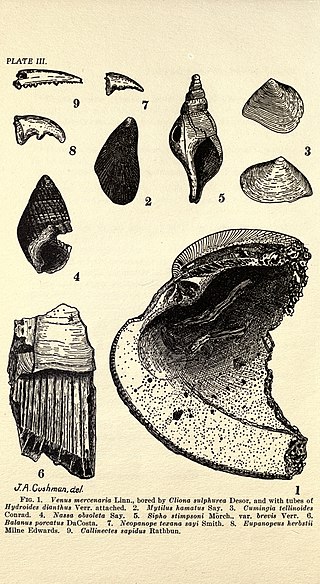
Joseph Augustine Cushman was an American micropaleontologist and academic. He specialized in the study of marine protozoans (foraminifera) and became the foremost foraminiferologist of the first half of the twentieth century, developing to a "world-famous system of discovering petroleum deposits". He also was a founding father of Kappa Delta Phi fraternity.

Gilbert Dennison Harris was an American geologist and paleontologist. He was a professor of paleontology and stratigraphic geology at Cornell University and proprietor and editor of two scientific journals, Bulletins of American Paleontology and Palaeontographica Americana. Harris later left Cornell and founded the Paleontological Research Institution, an independent organization dedicated to research and education in the field of paleontology.
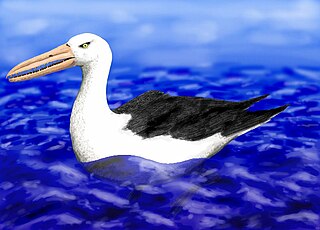
Osteodontornis is an extinct seabird genus. It contains a single named species, Osteodontornis orri, which was described quite exactly one century after the first species of the Pelagornithidae was. O. orri was named after Santa Barbara Museum of Natural History paleontologist Phil C. Orr, for his recognition of the importance of the specimen.

The Paleontological Research Institution, or PRI, is a paleontological organization in Ithaca, New York, with a mission including both research and education. PRI is affiliated with Cornell University, houses one of the largest fossil collections in North America, and publishes, among other things, the oldest journal of paleontology in the western hemisphere, Bulletins of American Paleontology.
Cambridge Scientific Abstracts was a division of Cambridge Information Group and provider of online databases, based in Bethesda, Maryland, before merging with ProQuest of Ann Arbor, Michigan, in 2007. CSA hosted databases of abstracts and developed taxonomic indexing of scholarly articles. These databases were hosted on the CSA Illumina platform and were available alongside add-on products like CSA Illustrata. The company produced numerous bibliographic databases in different fields of the arts and humanities, natural and social sciences, and technology. Thus, coverage included materials science, environmental sciences and pollution management, biological sciences, aquatic sciences and fisheries, biotechnology, engineering, computer science, sociology, linguistics, and other areas.

Sir Richard Owen was an English biologist, comparative anatomist and palaeontologist. Owen is generally considered to have been an outstanding naturalist with a remarkable gift for interpreting fossils.

The Journal of the National Cancer Institute (JNCI) is a peer-reviewed medical journal covering research in oncology that was established in August 1940. It is published monthly by Oxford University Press and is edited by Patricia A. Ganz. It was merged with Cancer Treatment Reports in January 1988. JNCI used to be the official journal of the U.S. National Cancer Institute (NCI); however, in 1996, the NCI and JNCI agreed to grow apart. Over the next five years, JNCI became independent of the NCI.
Emily Hoskins Vokes is an American malacologist, palaeontologist, and former university professor. She is an authority on the Muricidae, a large and diverse family of predatory sea snails, or marine gastropod mollusks. Vokes worked both on her own and with her husband, geologist Harold Ernest Vokes.
John West Wells was an American paleontologist, biologist and geologist who focused his research on corals.
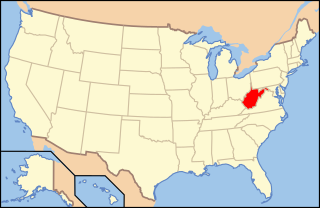
Paleontology in West Virginia refers to paleontological research occurring within or conducted by people from the U.S. state of West Virginia. West Virginia's fossil record begins in the Cambrian. From that time through the rest of the early Paleozoic, the state was at least partially submerged under a shallow sea. The Paleozoic seas of West Virginia were home to creatures like corals, eurypterids, graptolites, nautiloids, and trilobites at varying times. During the Carboniferous period, the sea was replaced by lushly vegetated coastal swamps. West Virginia is an excellent source of fossil plants due to these deposits. These swamps were home to amphibians. A gap in the local rock record spans from the Permian to the end of the Cenozoic. West Virginia was never the site of glacial activity during the Ice Age, but the state was home to creatures like mammoths, mastodons, and giant ground sloths. One local ground sloth, Megalonyx jeffersonii, was subject to the scholarly investigations of Thomas Jefferson, who misinterpreted the large-clawed remains as belonging to a lion-like predator. In 2008, this species was designated the West Virginia state fossil.

Paleontology in Oregon refers to paleontological research occurring within or conducted by people from the U.S. state of Oregon. Oregon's geologic record extends back approximately 400 million years ago to the Devonian period, before which time the state's landmass was likely submerged under water. Sediment records show that Oregon remained mostly submerged until the Paleocene period. The state's earliest fossil record includes plants, corals, and conodonts. Oregon was covered by seaways and volcanic islands during the Mesozoic era. Fossils from this period include marine plants, invertebrates, ichthyosaurs, pterosaurs, and traces such as invertebrate burrows. During the Cenozoic, Oregon's climate gradually cooled and eventually yielded the environments now found in the state. The era's fossils include marine and terrestrial plants, invertebrates, fish, amphibians, turtles, birds, mammals, and traces such as eggs and animal tracks.

The Bridger Formation is a geologic formation in southwestern Wyoming. It preserves fossils dating back to the Bridgerian and Uintan stages of the Paleogene Period. The formation was named by American geologist Ferdinand Vandeveer Hayden for Fort Bridger, which had itself been named for mountain man Jim Bridger. The Bridger Wilderness covers much of the Bridger Formation's area.
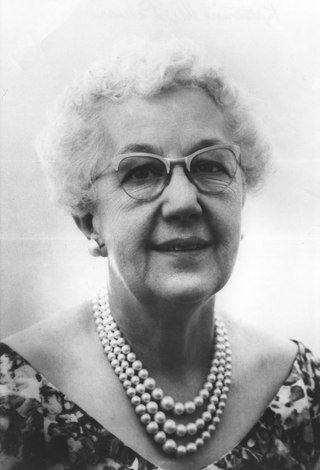
Katherine Van Winkle Palmer was a tertiary paleontologist, a scientist who studied fossils from the Cenozoic Era, and an accomplished geologist. Palmer is recognized for her field/doctoral study on Veneracean lamellibranches, a class of bivalve molluska that include clams, scallops and oysters. Palmer was a director of the Paleontological Research Institution (PRI) in New York. During Palmer's time as the director of the PRI, she oversaw the publication of numerous Bulletins of American Paleontology as well as several issues of Palaeontographica Americana. Palmer is well known for her field study and collection of molluscs that took place in several parts of the world, most notably in the Gulf of Mexico. Katherine was married to Ephraim L. Palmer and had two children together, Laurence and Richard Palmer.

Carlotta Joaquina Maury was a geologist, stratigrapher, paleontologist, and was one of the first women to work as a professional scientist in the oil and gas industry. She worked as a palaeontologist within an oil company; she was a petroleum geologist at Royal Dutch Shell. Maury focused on Tertiary mollusks. Maury initially taught in universities after attending Cornell University finishing with a PhD in 1902, although she had trouble achieving a full-time position. However, she really wanted to pursue paleontological expeditions. Even though she went on to later be successful, there were still elements of difficulty in her early career, in some ways due to her gender. In the early 1900s there were hardly any women with a career in science. Maury was one of those few women that pursued the sciences.

Roger Lansing Grande, more commonly known as Lance Grande, is an evolutionary biologist and curatorial scientist. His research and work is focused on Paleontology, Ichthyology, Systematics and Evolution. He is well known for his work on the paleontology of the Green River Formation and for his detailed monographs on the comparative anatomy and evolution of ray-finned fishes. He has also published books on broader issues, engaging larger audiences on the importance of the natural and the social sciences.
Palaeontologia Electronica is a triannual peer-reviewed open-access scientific journal published by Coquina Press covering paleontology. It was established in 1998 and is the oldest fully open-access electronic journal of paleontology. The journal is sponsored by the Society of Vertebrate Paleontology, the Paleontological Society, the Palaeontological Association, and the Western Interior Paleontological Society. The editors-in-chief are Julien Louys and Andrew Bush. In 2000, the first taxonomic names published electronically under new rules in the International Code of Zoological Nomenclature were published in the journal by Scott et al. (2000) for three new species of fossil foraminifera: Eggerella matsunoi, Haplophragmoides hatai, and Haplophragmoides nishikizawensis.
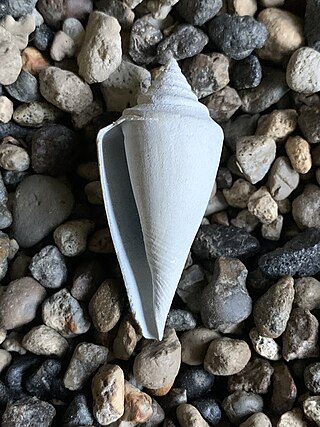
Conus adversarius is an extinct species of venomous sea snail in the genus Conus. It lived from the Early Pliocene until the Early Pleistocene. It is the only species in the genus that is entirely sinistral.
Vasum gurabicum is an extinct species of medium to large sea snail, a marine gastropod mollusk in the family Turbinellidae.














